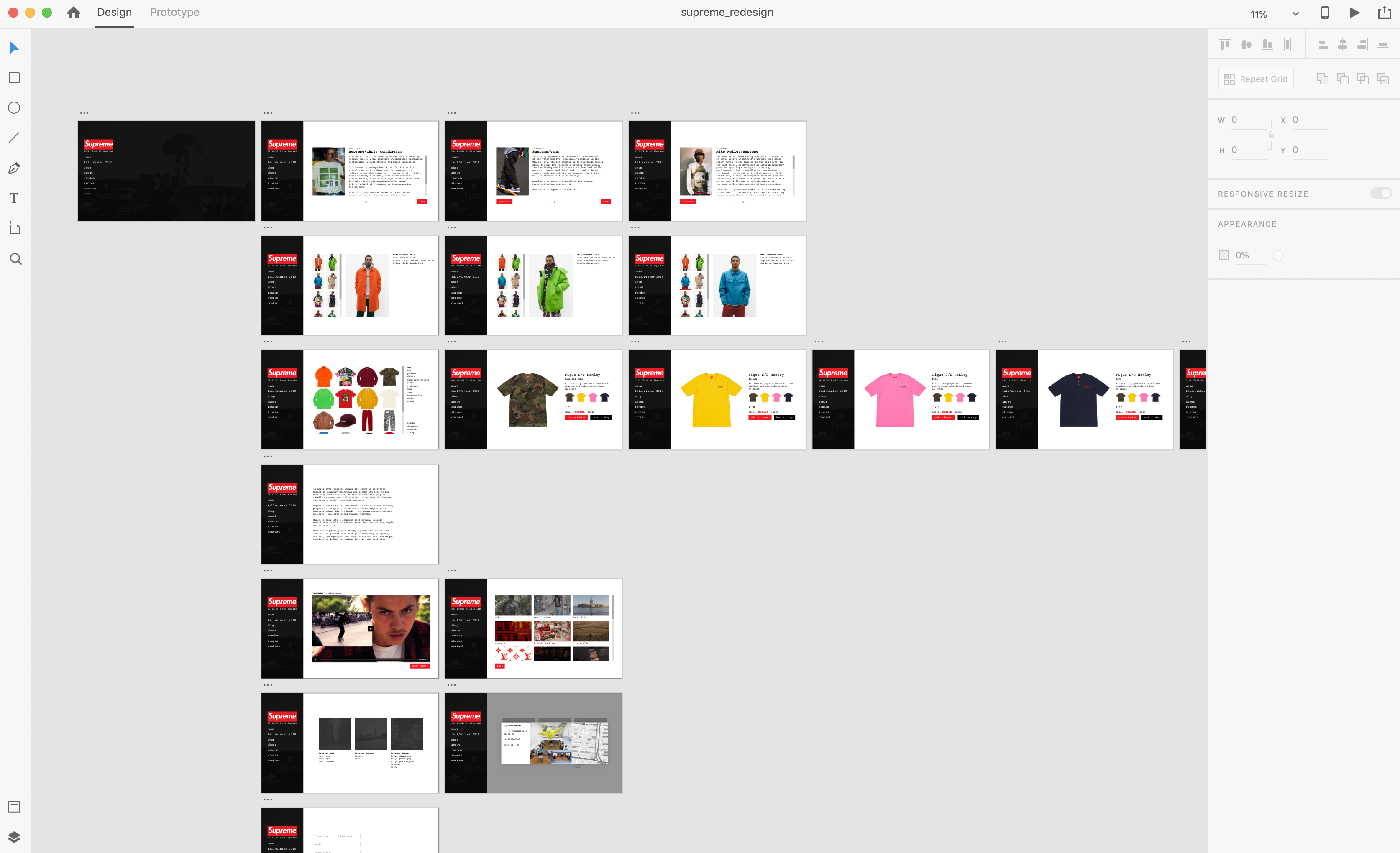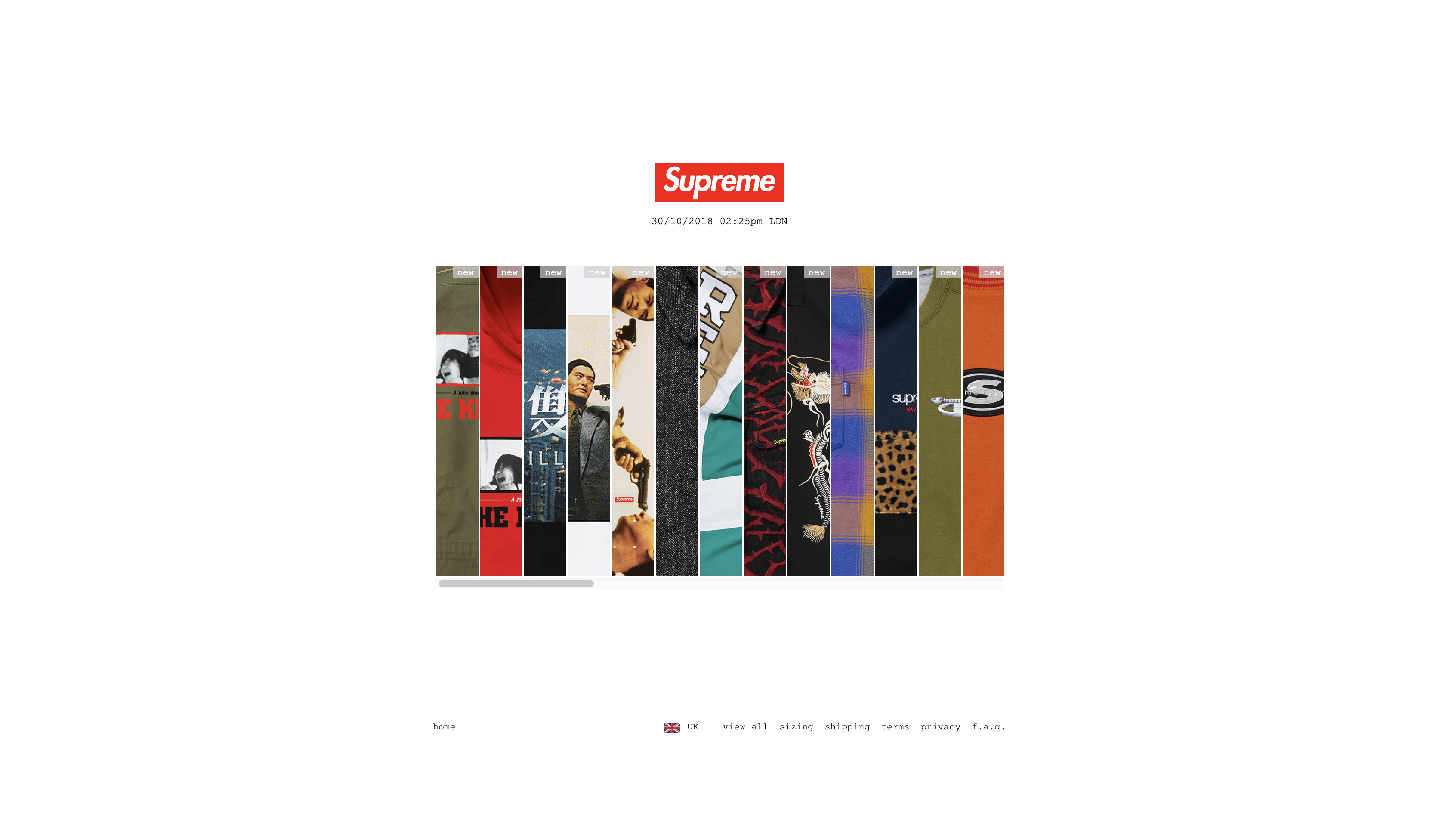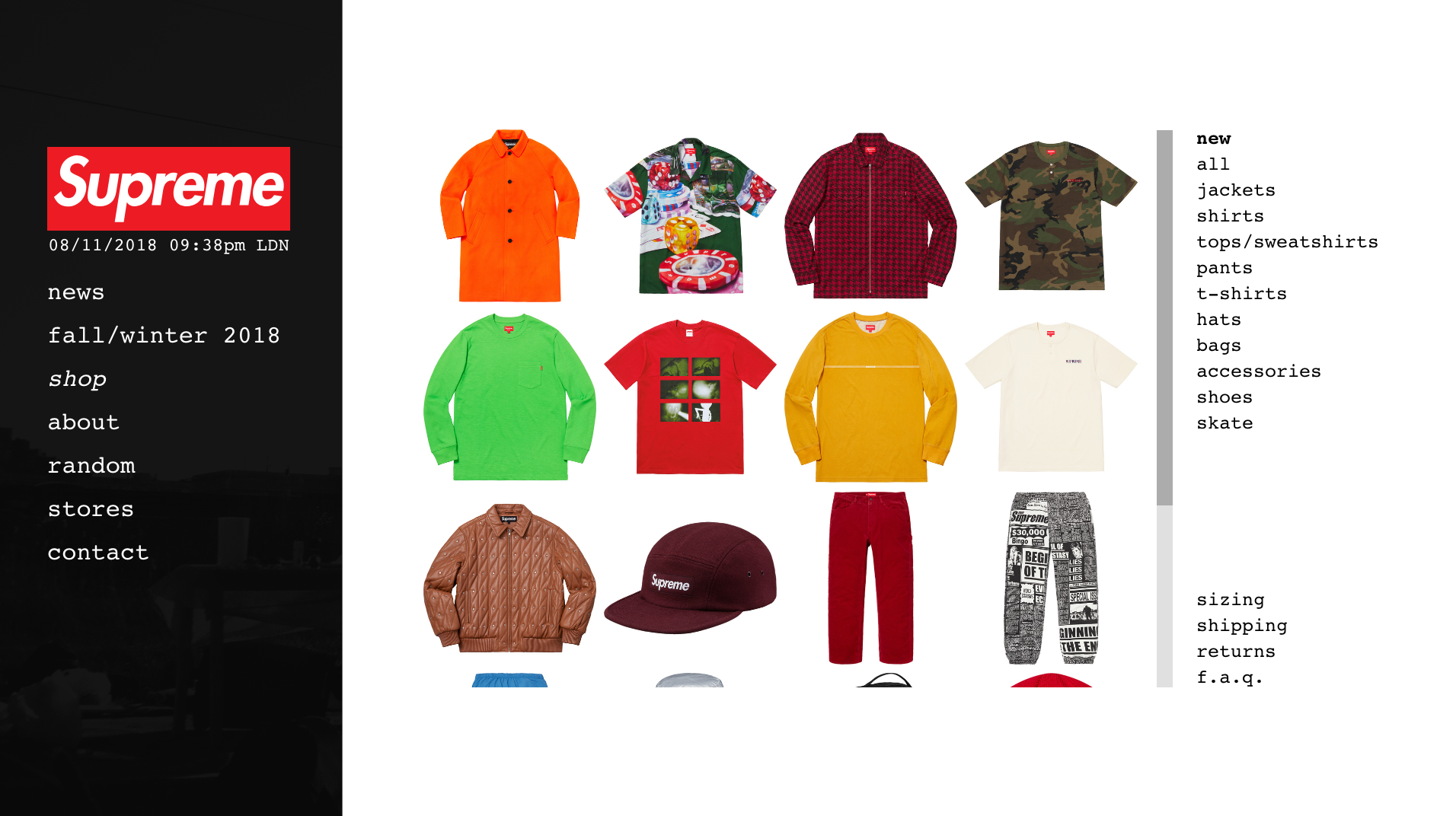Initial research
A study was developed
to explore the usability
of the current Supreme
website.
Study demographic
Research found that the Supreme target demographic is mostly 16-35 year old males, but due to the unisex nature of their clothing and the rise of female skate culture they are starting to attract a wider female audience. The study demographic reflects these statistics.
Scenarios
The scenarios were designed to replicate tasks which are likely to be commonly carried out by users on a the Supreme website, and therefore would give a more accurate insight into the usability of the website's core components.
1
Following seeing a camo t-shirt you liked the look of being worn online you decide you'd like to buy one. Having loaded up the Supreme website you find the t-shirt in medium and add it to your basket.
2
The t-shirt has arrived, however unfortunately it’s the wrong size! Now you need to check out the returns policy to find out how many days you have to return the item to ensure you can get a refund.
3
As you’re going on vacation to Japan soon you decide to see if there is a store near where you're staying in Osaka so you can make a note of the opening times and view the location on Google Maps.




